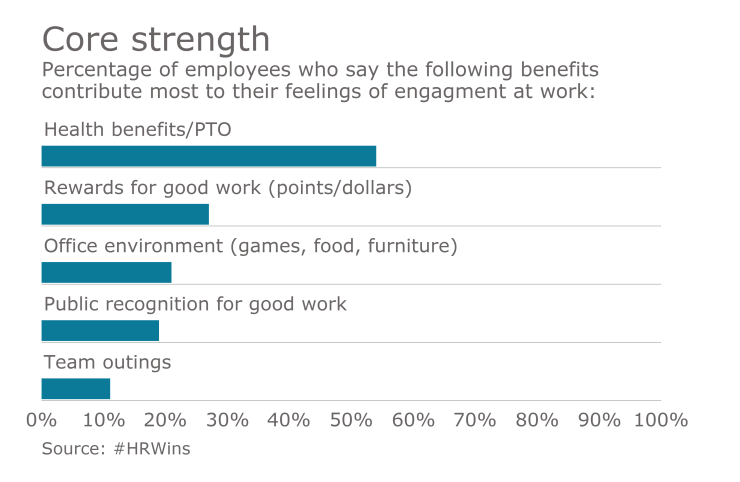At a time when many middle market employers and benefit professionals are looking for ways to get workers engaged, focusing on core benefits such as health insurance and paid time off may boost engagement, suggests new research.
The report, released this week by benefits and HR platform Namely, shows that most employees think health benefits and paid time off contribute most to their feelings of engagement. These core benefits beat out perks like recognition for good work, rewards and the increasingly popular wellness programs.

“The employers we surveyed chose core benefits and paid time off as the benefits and perks they feel deliver the biggest ROI to the organization,” says George LaRocque, founder of #HRwins, which conducted the research. “We also surveyed consumers to get the employee side, and we saw the same core benefits, health benefits and PTO ranked highest in increasing the feeling of engagement. I think it speaks to the need to deliver at that fundamental level before moving into different types of perks.”
That doesn’t mean other benefits aren’t important. It just means that the common denominator in middle market engagement is core benefits, and that without them laying a strong foundation perks like wellness programs may not be as effective, says LaRocque.
Outside of benefits, almost 60% of employees say that meaningful work plays a role in keeping them engaged and positive in the workplace. It’s not a new concept, but many employers may struggle to keep workers engaged during dry but necessary assignments.
“As the employer, discover what it is that is meaningful about what you do,” says Matt Straz, Namely’s founder and CEO. “Every company is doing something meaningful, but it’s figuring out what that is and articulating it so people who find that goal meaningful can opt in.”
“It speaks to the need to deliver at that fundamental level before moving into different types of perks.”
That way, even when employees are doing dry work, they understand that it’s working toward something bigger that they feel passionate about. Employers can aim to attract workers who find the company’s work meaningful by avoiding generic mission statements and being clear about their purpose.
It’s also important for employers to measure workers’ engagement levels so that they can see the impact of different benefits and perks, though currently only 8% have implemented strategies to do so. Many don’t have any strategy at all.
“We’re looking at engagement as an outcome when really it’s a supporting pillar to culture and work itself,” says LaRocque, adding that engagement isn’t just numbers on a paper – it’s knowing people’s birthdays and work anniversaries and creating a culture where employees are inspired to consistently do their best work because they care.





